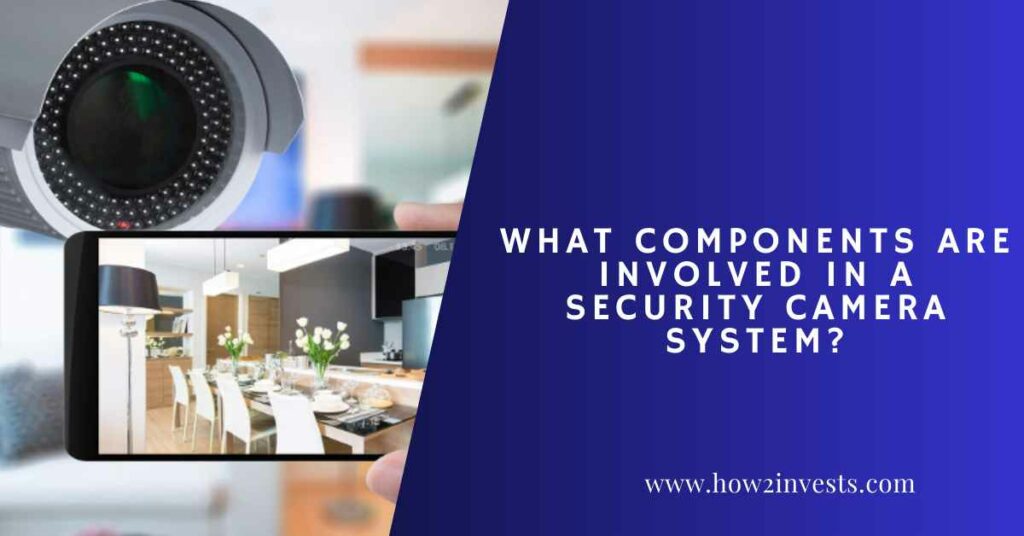What Components Are Involved in a Security Camera System?

A good security camera system needs high-quality cameras coupled with the right technology for recording, viewing, and retaining video.
When properly selected and installed, these elements create a tailored video monitoring solution for an organization’s needs. Here are the components that make up a CCTV system and the role of each part:
Central Recording Device
The network video recorder (NVR) functions as the core processor in an IP surveillance system. It receives camera feeds, compresses footage, and manages recording and storage.
Modern NVRs connect directly to IP cameras for seamless operation, replacing outdated DVRs. NVRs also enable remote viewing of live and recorded video.
Large facilities need robust NVRs that can handle 10+ simultaneous high-definition camera feeds. Smaller systems may require 4-8 channels with the necessary video resolution, frame rate, and retention period. A security camera system installer can help determine the ideal NVR model for specific needs.
Surveillance Cameras
Cameras capture and transmit footage to the NVR in a video monitoring system. IP network cameras are the modern standard and are preferred by many for their flexibility. They connect via Ethernet or Wi-Fi.
These cameras have 4K and 5K HD resolutions, allowing them to capture details like facial features and license plates from a distance. High-quality cameras empower advanced video analytics to extract actionable insights.
Some organizations still use older analog models despite their limited compatibility. These cameras can provide a cost-effective solution for areas where high-resolution video is not a priority.
Selecting suitable camera types forms the basis for an effective system. That’s why rugged bullet cameras suit outdoor perimeters requiring constant oversight. Conversely, unobtrusive dome cameras fit interior areas where discretion is needed. Thoroughly evaluating each space guides the best camera selection.
Cabling and Power Supplies
Cables like coaxial Siamese cables and CAT5e/CAT6 Ethernet cables are run through walls, ceilings, conduits, and other infrastructure to connect the cameras and devices. While wireless IP cameras connect via Wi-Fi, wired networks provide stable and higher bandwidth connections.
Coaxial cables work well for analog CCTV systems due to their noise resistance and ability to transmit video over long distances. CAT5e/CAT6 cables are better suited for IP cameras since they can handle high data rates and provide up to 100 meters of quality transmission.
All cameras and equipment need constant power delivery and surge protectors to operate without hitches. Power over Ethernet (PoE) switches efficiently provide both power and data over Ethernet cables, consolidating these services through one infrastructure.
Uninterrupted power supplies are needed to prevent data and surveillance gaps during power outages. Install surge protectors to guard the sensitive electronics against potentially damaging voltage spikes.
Video Storage Infrastructure
High-definition cameras recording continuous, high-resolution footage from multiple locations necessitate terabytes of available space. Specialized CCTV hard disk drives withstand constant video read/write workloads to deliver reliable performance.
These drives utilize AV-optimized firmware for smooth video streams and high tolerance to vibration, temperature fluctuations, and component wear. Video analytics like facial recognition and license plate capture also increase data storage demands.
A reliable security camera system installer can provide an expert recommendation for your specific video storage needs based on the number of cameras, video quality, and retention period.
Monitoring and Management Infrastructure
Effective video surveillance depends on security personnel’s ability to monitor live and recorded footage and rapidly respond to incidents.
Monitoring stations provide centralized workspaces with video walls, multi-screen displays, and controls to view camera feeds from multiple locations. This helps operators use alerts and motion-triggered events to identify unusual or suspicious activity.
A video management system (VMS) enables unified configuration, operation, and administration of the surveillance system. Quality VMS platforms seamlessly integrate cameras, sensors, access controls, and other system components for streamlined management.
Invest in a Custom Security Camera System for Proactive Protection
A high-performance CCTV system requires quality components tailored to an organization’s proactive surveillance and seamless remote monitoring needs.
The combination of high-definition cameras, cabling, ample storage, and an intuitive VMS enables 24/7 visual security. Partnering with an experienced security camera system installer ensures that every component integrates seamlessly for scalable surveillance that deters threats.